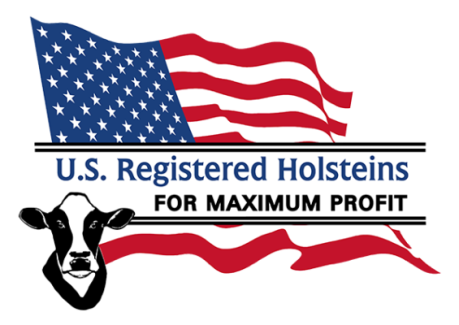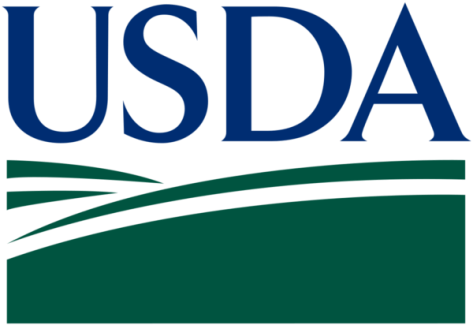Lactanet is working with a U.S.-based Angus association to share genotyping of Angus bulls from Canada, the U.S. and Australia, as it responds to calls from dairy sector stakeholders to assist in beef-on-dairy breeding decisions.
Brian Van Doormaal, chief services officer for Lactanet, described the arrangement during the company’s Feb. 27 Open Industry Session webinar. It will soon bear fruit in the form of a “Beef-on-Dairy Query” feature on the organization’s website.
Crossbred calves are a significant potential income stream on Canadian dairy farms, so dairy producers want to know which genetic traits can bring top prices.
Van Doormaal described a “perfect trifecta” of conditions that led to calls for better beef-on-dairy information. First, in the late 2000s, genomic testing of dairy animals allowed for accurate rankings within a herd, regardless of age, of the best dams from which to build bloodlines.
Then sexed semen came into widespread use, increasing the chance of getting a heifer calf from those top ranking animals to 95 per cent. Then came the movement to breed the rest of the animals to beef sires, initially as a cost-saving measure but more recently as a secondary income opportunity.
Van Doormaal said nearly 40 per cent of Holstein breeders and nearly 30 per cent of Jersey and Ayrshire breeders across Canada use some form of this strategy. Those producers might have initially focused on calving ease when selecting beef bulls for lower-ranking dams, but now the opportunities to market crossbred calves have them looking at other traits. “The mindset of a lot of dairy producers is shifting now so that they’re not just producing milk on their farms, but they’re realizing they’re moving more into being a meat producer as well.”
To aid beef-on-dairy decisions, Van Doormaal says Lactanet can play a role through collection of on-farm data it already performs on participating Dairy Herd Improvement and DairyComp herds. Calving ease and calf size data are already collected, as well as the genomics on the dam side for herds that test animals. Potentially, the organization could move into factors such as calf growth or calf feed efficiency – anything that relates to the beef-on-dairy strategy.
Through its leadership of the DairyTrace national traceability program, Lactanet also has access to data on calf move-ins and move-outs, but it generally knows little on the beef sire side. The database could be grown and strengthened by genotyping the crossbred calves. But Van Doormaal conceded it is unlikely any dairy producer will pay to genotype animals that will leave the farm within a few weeks.
A key difference between the beef-on-dairy strategy and a genetic program to build dairy strengths over the long term is that the beef strategy typically doesn’t aim to build long-lasting bloodlines. Any bulls used in a beef-on-dairy strategy are likely only used for a while before the producer moves on to something else. So, Lactanet will not invest in a beef-on-dairy genotyping initiative, Van Doormaal said. “This would require a huge investment of money, of people, and definitely time” with little chance of a return on investment.
Instead, a collaboration has begun with Missouri-based Angus Genetics Incorporated (AGI), a subsidiary of the American Angus Association, for access to genomic data from Angus bulls in the U.S., Australia and Canada. It is a starting point for what Van Doormaal expects will be an expanded data offering over time. The organization will soon include a “Beef on Dairy Query” on its website, alongside its other “Query” options for searching bull or cow information.
Van Doormaal noted the Canadian Angus Association provides its bull data to the U.S. organization, and a similar agreement was recently announced between AGI and the Australian breed group. “All we’re doing is receiving files from AGI and then creating the tools to allow those (files) to be viewed on our website.”
Based on its genomic database, AGI has created a ranking of beef-on-dairy options for using Angus bulls on Holsteins and another for Jerseys. Due to the relative scarcity of Ayrshire milking herds in the U.S., however, there isn’t one for breeding Angus to Ayrshire.
Van Doormaal lists low cost and the ability to provide information immediately as the main benefits of this approach for Lactanet. But it also paves the way for a “strategy of collaboration” that could see similar or expanded arrangements developed with other beef breed associations.
It would be great, he noted, if beef breed associations could eventually share with Lactanet their information about carcass weights or carcass quality if they’re collecting such data. He also acknowledged “the tools that we’re getting from AGI … (are) calculated when Angus sires are used to breed Angus dams and produce Angus calves.” For the most reliable information, more research is necessary in North America into beef-on-dairy breeding.
When the organization set out to build genetic knowledge about beef-on-dairy breeding, providing access to comprehensive genetic information about Angus bulls was the priority. Lactanet estimates that more than 75 per cent of beef-on-dairy breedings in Canada are to Angus sires.
Van Doormaal believes this accomplishes the goal. He described Angus as “the preeminent breed being used by producers with all three of the (main dairy) breeds” as well as “the low-hanging fruit” for adding value to the organization’s offering for the Canadian dairy sector.
Source: Farmtario / Stew Slater




